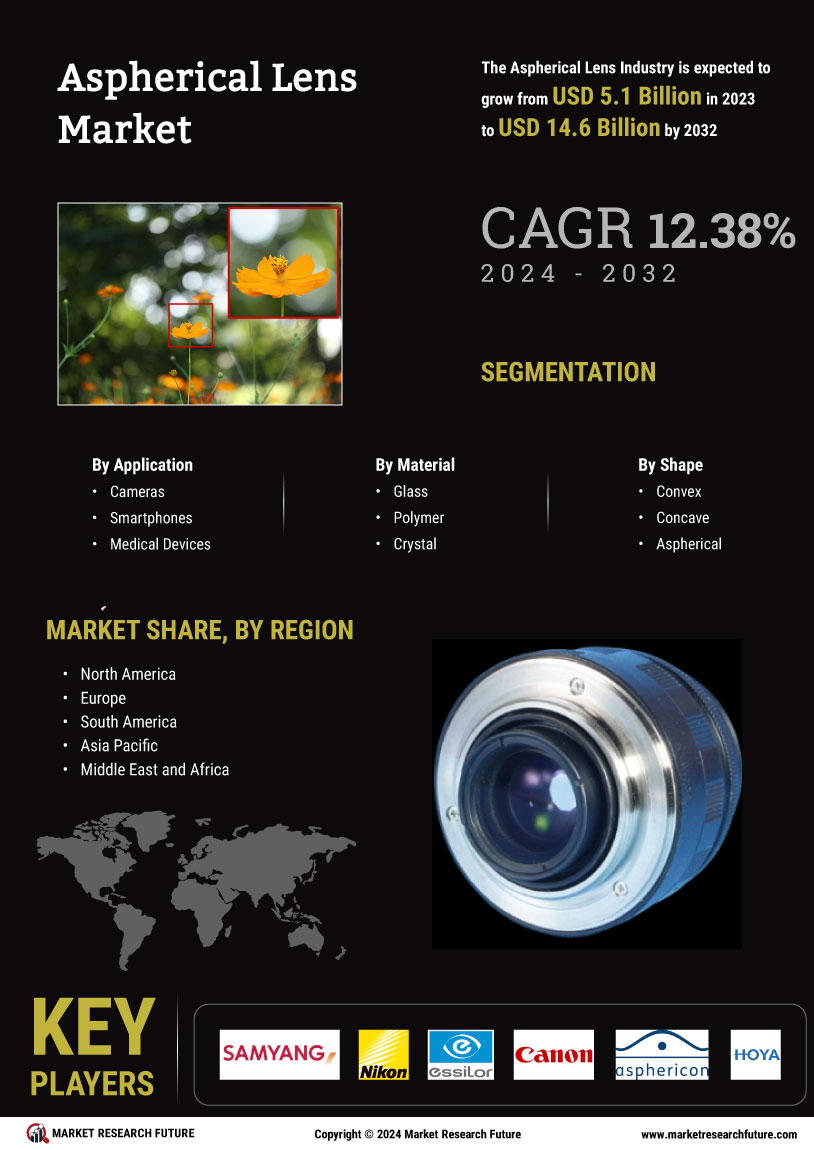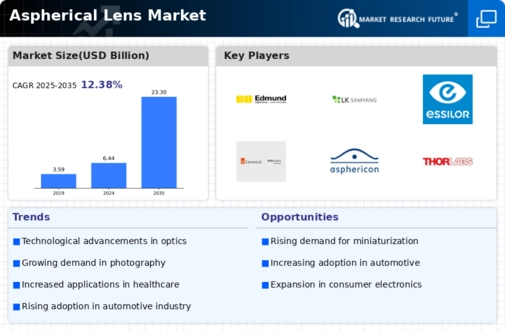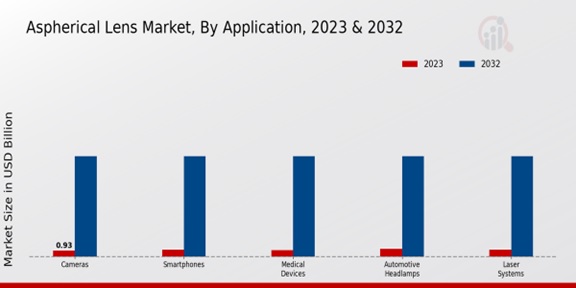-
'TABLE OF CONTENTS
-
EXECUTIVE
-
SUMMARY
-
Market Overview
-
Key Findings
-
Market Segmentation
-
Competitive Landscape
-
Challenges and Opportunities
-
Future Outlook
-
MARKET INTRODUCTION
-
Definition
-
Scope of the study
- Research Objective
- Assumption
- Limitations
-
RESEARCH METHODOLOGY
-
Overview
-
Data Mining
-
Secondary Research
-
Primary Research
- Primary Interviews and Information Gathering
-
Process
-
Breakdown of Primary Respondents
-
Forecasting Model
-
Market Size Estimation
- Bottom-Up Approach
- Top-Down Approach
-
Data Triangulation
-
Validation
-
MARKET DYNAMICS
-
Overview
-
Drivers
-
Restraints
-
Opportunities
-
MARKET FACTOR ANALYSIS
-
Value
-
chain Analysis
-
Porter''s Five Forces Analysis
-
Bargaining Power of Suppliers
- Bargaining Power of Buyers
- Threat of New Entrants
- Threat
-
of Substitutes
-
Intensity of Rivalry
-
COVID-19 Impact Analysis
-
Market Impact Analysis
- Regional Impact
- Opportunity and Threat Analysis
-
ASPHERICAL LENS MARKET, BY APPLICATION (USD BILLION)
-
Cameras
-
Smartphones
-
Medical Devices
-
Automotive Headlamps
-
Laser Systems
-
ASPHERICAL LENS MARKET, BY MATERIAL (USD BILLION)
-
Glass
-
Polymer
-
Crystal
-
ASPHERICAL
-
LENS MARKET, BY SHAPE (USD BILLION)
-
Convex
-
Concave
-
Aspherical
-
ASPHERICAL LENS MARKET, BY REGIONAL (USD BILLION)
-
North America
- US
- Canada
-
Europe
- Germany
- UK
- France
- Russia
- Italy
- Spain
- Rest of Europe
-
APAC
- China
- India
- Japan
- South
-
Korea
-
Malaysia
-
Thailand
-
Indonesia
-
Rest of APAC
-
South America
-
Brazil
-
Mexico
-
Argentina
-
Rest of South America
-
MEA
-
GCC Countries
-
South Africa
-
Rest of MEA
-
COMPETITIVE LANDSCAPE
-
Overview
-
Competitive Analysis
-
Market share Analysis
-
Major Growth Strategy in the Aspherical Lens
-
Market
-
Competitive Benchmarking
-
Leading Players in Terms of Number of Developments in the Aspherical
-
Lens Market
-
Key developments and growth strategies
-
New Product Launch/Service Deployment
- Merger &
-
Acquisitions
-
Joint Ventures
-
Major Players Financial Matrix
-
Sales and Operating Income
- Major Players R&D Expenditure. 2023
-
COMPANY PROFILES
-
Samyang
-
Optics
-
Financial Overview
-
Products Offered
-
Key Developments
-
SWOT Analysis
-
Key Strategies
-
Mei Jiuping Optics
-
Financial Overview
-
Products Offered
-
Key Developments
-
SWOT Analysis
-
Key Strategies
-
Nikon
-
Financial Overview
-
Products Offered
-
Key Developments
-
SWOT Analysis
-
Key Strategies
-
Essilor
-
Financial Overview
-
Products Offered
-
Key Developments
-
SWOT Analysis
-
Key Strategies
-
Canon
-
Financial Overview
-
Products Offered
-
Key Developments
-
SWOT Analysis
-
Key Strategies
-
OphirSpiricon
-
Financial Overview
-
Products Offered
-
Key Developments
-
SWOT Analysis
-
Key Strategies
-
Coastal Optical Systems
-
Financial Overview
- Products Offered
- Key Developments
- SWOT Analysis
- Key Strategies
-
Asphericon
- Financial Overview
- Products Offered
- Key Developments
- SWOT Analysis
- Key Strategies
-
Thorlabs
- Financial Overview
- Products Offered
- Key Developments
- SWOT Analysis
- Key Strategies
-
Edmund Optics
- Financial Overview
- Products Offered
- Key Developments
- SWOT Analysis
- Key Strategies
-
Hoya
- Financial Overview
- Products Offered
- Key Developments
- SWOT Analysis
- Key Strategies
-
Lambda Photometrics
- Financial Overview
- Products Offered
- Key Developments
- SWOT Analysis
- Key Strategies
-
Attley Optic Technology
- Financial Overview
- Products Offered
- Key
-
Developments
-
SWOT Analysis
-
Key Strategies
-
OptoSigma
-
Financial Overview
-
Products Offered
-
Key Developments
-
SWOT Analysis
-
Key Strategies
-
Nikon Precision
-
Financial Overview
-
Products Offered
-
Key Developments
-
SWOT Analysis
-
Key Strategies
-
References
-
Related Reports
-
LIST
-
OF TABLES
-
LIST OF ASSUMPTIONS
-
FORECAST, BY APPLICATION, 2025-2034 (USD BILLIONS)
-
ESTIMATES & FORECAST, BY MATERIAL, 2025-2034 (USD BILLIONS)
-
LENS MARKET SIZE ESTIMATES & FORECAST, BY SHAPE, 2025-2034 (USD BILLIONS)
-
ASPHERICAL LENS MARKET SIZE ESTIMATES & FORECAST, BY REGIONAL, 2025-2034 (USD
-
BILLIONS)
-
US ASPHERICAL LENS MARKET SIZE ESTIMATES & FORECAST, BY APPLICATION, 2025-2034
-
(USD BILLIONS)
-
US ASPHERICAL LENS MARKET SIZE ESTIMATES & FORECAST, BY MATERIAL, 2025-2034
-
(USD BILLIONS)
-
US ASPHERICAL LENS MARKET SIZE ESTIMATES & FORECAST, BY SHAPE, 2025-2034
-
(USD BILLIONS)
-
US ASPHERICAL LENS MARKET SIZE ESTIMATES & FORECAST, BY REGIONAL, 2025-2034
-
(USD BILLIONS)
-
CANADA ASPHERICAL LENS MARKET SIZE ESTIMATES & FORECAST, BY APPLICATION,
-
2034 (USD BILLIONS)
-
BY MATERIAL, 2025-2034 (USD BILLIONS)
-
FORECAST, BY SHAPE, 2025-2034 (USD BILLIONS)
-
& FORECAST, BY REGIONAL, 2025-2034 (USD BILLIONS)
-
& FORECAST, BY APPLICATION, 2025-2034 (USD BILLIONS)
-
& FORECAST, BY MATERIAL, 2025-2034 (USD BILLIONS)
-
& FORECAST, BY SHAPE, 2025-2034 (USD BILLIONS)
-
& FORECAST, BY REGIONAL, 2025-2034 (USD BILLIONS)
-
& FORECAST, BY APPLICATION, 2025-2034 (USD BILLIONS)
-
& FORECAST, BY MATERIAL, 2025-2034 (USD BILLIONS)
-
& FORECAST, BY SHAPE, 2025-2034 (USD BILLIONS)
-
& FORECAST, BY REGIONAL, 2025-2034 (USD BILLIONS)
-
& FORECAST, BY APPLICATION, 2025-2034 (USD BILLIONS)
-
& FORECAST, BY MATERIAL, 2025-2034 (USD BILLIONS)
-
& FORECAST, BY SHAPE, 2025-2034 (USD BILLIONS)
-
& FORECAST, BY REGIONAL, 2025-2034 (USD BILLIONS)
-
& FORECAST, BY APPLICATION, 2025-2034 (USD BILLIONS)
-
& FORECAST, BY MATERIAL, 2025-2034 (USD BILLIONS)
-
& FORECAST, BY SHAPE, 2025-2034 (USD BILLIONS)
-
& FORECAST, BY REGIONAL, 2025-2034 (USD BILLIONS)
-
& FORECAST, BY APPLICATION, 2025-2034 (USD BILLIONS)
-
& FORECAST, BY MATERIAL, 2025-2034 (USD BILLIONS)
-
& FORECAST, BY SHAPE, 2025-2034 (USD BILLIONS)
-
& FORECAST, BY REGIONAL, 2025-2034 (USD BILLIONS)
-
& FORECAST, BY APPLICATION, 2025-2034 (USD BILLIONS)
-
& FORECAST, BY MATERIAL, 2025-2034 (USD BILLIONS)
-
& FORECAST, BY SHAPE, 2025-2034 (USD BILLIONS)
-
& FORECAST, BY REGIONAL, 2025-2034 (USD BILLIONS)
-
& FORECAST, BY APPLICATION, 2025-2034 (USD BILLIONS)
-
& FORECAST, BY MATERIAL, 2025-2034 (USD BILLIONS)
-
& FORECAST, BY SHAPE, 2025-2034 (USD BILLIONS)
-
& FORECAST, BY REGIONAL, 2025-2034 (USD BILLIONS)
-
ESTIMATES & FORECAST, BY APPLICATION, 2025-2034 (USD BILLIONS)
-
LENS MARKET SIZE ESTIMATES & FORECAST, BY MATERIAL, 2025-2034 (USD BILLIONS)
-
REST OF EUROPE ASPHERICAL LENS MARKET SIZE ESTIMATES & FORECAST, BY SHAPE, 2025-2034
-
(USD BILLIONS)
-
REST OF EUROPE ASPHERICAL LENS MARKET SIZE ESTIMATES & FORECAST, BY REGIONAL,
-
2034 (USD BILLIONS)
-
BY APPLICATION, 2025-2034 (USD BILLIONS)
-
& FORECAST, BY MATERIAL, 2025-2034 (USD BILLIONS)
-
& FORECAST, BY SHAPE, 2025-2034 (USD BILLIONS)
-
& FORECAST, BY REGIONAL, 2025-2034 (USD BILLIONS)
-
& FORECAST, BY APPLICATION, 2025-2034 (USD BILLIONS)
-
& FORECAST, BY MATERIAL, 2025-2034 (USD BILLIONS)
-
& FORECAST, BY SHAPE, 2025-2034 (USD BILLIONS)
-
& FORECAST, BY REGIONAL, 2025-2034 (USD BILLIONS)
-
& FORECAST, BY APPLICATION, 2025-2034 (USD BILLIONS)
-
& FORECAST, BY MATERIAL, 2025-2034 (USD BILLIONS)
-
& FORECAST, BY SHAPE, 2025-2034 (USD BILLIONS)
-
& FORECAST, BY REGIONAL, 2025-2034 (USD BILLIONS)
-
& FORECAST, BY APPLICATION, 2025-2034 (USD BILLIONS)
-
& FORECAST, BY MATERIAL, 2025-2034 (USD BILLIONS)
-
& FORECAST, BY SHAPE, 2025-2034 (USD BILLIONS)
-
& FORECAST, BY REGIONAL, 2025-2034 (USD BILLIONS)
-
ESTIMATES & FORECAST, BY APPLICATION, 2025-2034 (USD BILLIONS)
-
LENS MARKET SIZE ESTIMATES & FORECAST, BY MATERIAL, 2025-2034 (USD BILLIONS)
-
SOUTH KOREA ASPHERICAL LENS MARKET SIZE ESTIMATES & FORECAST, BY SHAPE, 2025-2034
-
(USD BILLIONS)
-
SOUTH KOREA ASPHERICAL LENS MARKET SIZE ESTIMATES & FORECAST, BY REGIONAL,
-
2034 (USD BILLIONS)
-
BY APPLICATION, 2025-2034 (USD BILLIONS)
-
& FORECAST, BY MATERIAL, 2025-2034 (USD BILLIONS)
-
& FORECAST, BY SHAPE, 2025-2034 (USD BILLIONS)
-
& FORECAST, BY REGIONAL, 2025-2034 (USD BILLIONS)
-
& FORECAST, BY APPLICATION, 2025-2034 (USD BILLIONS)
-
& FORECAST, BY MATERIAL, 2025-2034 (USD BILLIONS)
-
& FORECAST, BY SHAPE, 2025-2034 (USD BILLIONS)
-
& FORECAST, BY REGIONAL, 2025-2034 (USD BILLIONS)
-
& FORECAST, BY APPLICATION, 2025-2034 (USD BILLIONS)
-
& FORECAST, BY MATERIAL, 2025-2034 (USD BILLIONS)
-
& FORECAST, BY SHAPE, 2025-2034 (USD BILLIONS)
-
& FORECAST, BY REGIONAL, 2025-2034 (USD BILLIONS)
-
ESTIMATES & FORECAST, BY APPLICATION, 2025-2034 (USD BILLIONS)
-
LENS MARKET SIZE ESTIMATES & FORECAST, BY MATERIAL, 2025-2034 (USD BILLIONS)
-
REST OF APAC ASPHERICAL LENS MARKET SIZE ESTIMATES & FORECAST, BY SHAPE, 2025-2034
-
(USD BILLIONS)
-
REST OF APAC ASPHERICAL LENS MARKET SIZE ESTIMATES & FORECAST, BY REGIONAL,
-
2034 (USD BILLIONS)
-
FORECAST, BY APPLICATION, 2025-2034 (USD BILLIONS)
-
ESTIMATES & FORECAST, BY MATERIAL, 2025-2034 (USD BILLIONS)
-
LENS MARKET SIZE ESTIMATES & FORECAST, BY SHAPE, 2025-2034 (USD BILLIONS)
-
ASPHERICAL LENS MARKET SIZE ESTIMATES & FORECAST, BY REGIONAL, 2025-2034 (USD
-
BILLIONS)
-
BRAZIL ASPHERICAL LENS MARKET SIZE ESTIMATES & FORECAST, BY APPLICATION,
-
2034 (USD BILLIONS)
-
BY MATERIAL, 2025-2034 (USD BILLIONS)
-
FORECAST, BY SHAPE, 2025-2034 (USD BILLIONS)
-
& FORECAST, BY REGIONAL, 2025-2034 (USD BILLIONS)
-
& FORECAST, BY APPLICATION, 2025-2034 (USD BILLIONS)
-
& FORECAST, BY MATERIAL, 2025-2034 (USD BILLIONS)
-
& FORECAST, BY SHAPE, 2025-2034 (USD BILLIONS)
-
& FORECAST, BY REGIONAL, 2025-2034 (USD BILLIONS)
-
& FORECAST, BY APPLICATION, 2025-2034 (USD BILLIONS)
-
& FORECAST, BY MATERIAL, 2025-2034 (USD BILLIONS)
-
& FORECAST, BY SHAPE, 2025-2034 (USD BILLIONS)
-
& FORECAST, BY REGIONAL, 2025-2034 (USD BILLIONS)
-
SIZE ESTIMATES & FORECAST, BY APPLICATION, 2025-2034 (USD BILLIONS)
-
AMERICA ASPHERICAL LENS MARKET SIZE ESTIMATES & FORECAST, BY MATERIAL, 2025-2034
-
(USD BILLIONS)
-
REST OF SOUTH AMERICA ASPHERICAL LENS MARKET SIZE ESTIMATES & FORECAST,
-
BY SHAPE, 2025-2034 (USD BILLIONS)
-
SIZE ESTIMATES & FORECAST, BY REGIONAL, 2025-2034 (USD BILLIONS)
-
LENS MARKET SIZE ESTIMATES & FORECAST, BY APPLICATION, 2025-2034 (USD BILLIONS)
-
MEA ASPHERICAL LENS MARKET SIZE ESTIMATES & FORECAST, BY MATERIAL, 2025-2034
-
(USD BILLIONS)
-
MEA ASPHERICAL LENS MARKET SIZE ESTIMATES & FORECAST, BY SHAPE, 2025-2034
-
(USD BILLIONS)
-
MEA ASPHERICAL LENS MARKET SIZE ESTIMATES & FORECAST, BY REGIONAL, 2025-2034
-
(USD BILLIONS)
-
GCC COUNTRIES ASPHERICAL LENS MARKET SIZE ESTIMATES & FORECAST, BY APPLICATION,
-
2034 (USD BILLIONS)
-
FORECAST, BY MATERIAL, 2025-2034 (USD BILLIONS)
-
ESTIMATES & FORECAST, BY SHAPE, 2025-2034 (USD BILLIONS)
-
LENS MARKET SIZE ESTIMATES & FORECAST, BY REGIONAL, 2025-2034 (USD BILLIONS)
-
SOUTH AFRICA ASPHERICAL LENS MARKET SIZE ESTIMATES & FORECAST, BY APPLICATION,
-
2034 (USD BILLIONS)
-
FORECAST, BY MATERIAL, 2025-2034 (USD BILLIONS)
-
ESTIMATES & FORECAST, BY SHAPE, 2025-2034 (USD BILLIONS)
-
LENS MARKET SIZE ESTIMATES & FORECAST, BY REGIONAL, 2025-2034 (USD BILLIONS)
-
REST OF MEA ASPHERICAL LENS MARKET SIZE ESTIMATES & FORECAST, BY APPLICATION,
-
2034 (USD BILLIONS)
-
FORECAST, BY MATERIAL, 2025-2034 (USD BILLIONS)
-
ESTIMATES & FORECAST, BY SHAPE, 2025-2034 (USD BILLIONS)
-
LENS MARKET SIZE ESTIMATES & FORECAST, BY REGIONAL, 2025-2034 (USD BILLIONS)
-
PRODUCT LAUNCH/PRODUCT DEVELOPMENT/APPROVAL
-
SYNOPSIS
-
NORTH AMERICA ASPHERICAL LENS MARKET ANALYSIS
-
US ASPHERICAL LENS MARKET ANALYSIS BY MATERIAL
-
US ASPHERICAL LENS MARKET ANALYSIS BY REGIONAL
-
BY APPLICATION
-
CANADA ASPHERICAL LENS MARKET ANALYSIS BY MATERIAL
-
BY SHAPE
-
CANADA ASPHERICAL LENS MARKET ANALYSIS BY REGIONAL
-
GERMANY ASPHERICAL LENS MARKET ANALYSIS BY APPLICATION
-
BY MATERIAL
-
GERMANY ASPHERICAL LENS MARKET ANALYSIS BY SHAPE
-
BY REGIONAL
-
UK ASPHERICAL LENS MARKET ANALYSIS BY APPLICATION
-
MATERIAL
-
UK ASPHERICAL LENS MARKET ANALYSIS BY SHAPE
-
REGIONAL
-
FRANCE ASPHERICAL LENS MARKET ANALYSIS BY APPLICATION
-
BY MATERIAL
-
FRANCE ASPHERICAL LENS MARKET ANALYSIS BY SHAPE
-
BY REGIONAL
-
RUSSIA ASPHERICAL LENS MARKET ANALYSIS BY APPLICATION
-
BY MATERIAL
-
RUSSIA ASPHERICAL LENS MARKET ANALYSIS BY SHAPE
-
BY REGIONAL
-
ITALY ASPHERICAL LENS MARKET ANALYSIS BY APPLICATION
-
BY MATERIAL
-
ITALY ASPHERICAL LENS MARKET ANALYSIS BY SHAPE
-
BY REGIONAL
-
SPAIN ASPHERICAL LENS MARKET ANALYSIS BY APPLICATION
-
BY MATERIAL
-
SPAIN ASPHERICAL LENS MARKET ANALYSIS BY SHAPE
-
BY REGIONAL
-
REST OF EUROPE ASPHERICAL LENS MARKET ANALYSIS BY APPLICATION
-
LENS MARKET ANALYSIS BY MATERIAL
-
REST OF EUROPE ASPHERICAL LENS MARKET ANALYSIS BY REGIONAL
-
LENS MARKET ANALYSIS BY APPLICATION
-
CHINA ASPHERICAL LENS MARKET ANALYSIS BY SHAPE
-
BY REGIONAL
-
INDIA ASPHERICAL LENS MARKET ANALYSIS BY APPLICATION
-
BY MATERIAL
-
INDIA ASPHERICAL LENS MARKET ANALYSIS BY SHAPE
-
BY REGIONAL
-
JAPAN ASPHERICAL LENS MARKET ANALYSIS BY APPLICATION
-
BY MATERIAL
-
JAPAN ASPHERICAL LENS MARKET ANALYSIS BY SHAPE
-
BY REGIONAL
-
SOUTH KOREA ASPHERICAL LENS MARKET ANALYSIS BY APPLICATION
-
LENS MARKET ANALYSIS BY MATERIAL
-
ASPHERICAL LENS MARKET ANALYSIS BY REGIONAL
-
BY APPLICATION
-
MALAYSIA ASPHERICAL LENS MARKET ANALYSIS BY MATERIAL
-
BY SHAPE
-
MALAYSIA ASPHERICAL LENS MARKET ANALYSIS BY REGIONAL
-
BY APPLICATION
-
THAILAND ASPHERICAL LENS MARKET ANALYSIS BY MATERIAL
-
BY SHAPE
-
THAILAND ASPHERICAL LENS MARKET ANALYSIS BY REGIONAL
-
BY APPLICATION
-
INDONESIA ASPHERICAL LENS MARKET ANALYSIS BY MATERIAL
-
BY SHAPE
-
INDONESIA ASPHERICAL LENS MARKET ANALYSIS BY REGIONAL
-
BY APPLICATION
-
REST OF APAC ASPHERICAL LENS MARKET ANALYSIS BY MATERIAL
-
LENS MARKET ANALYSIS BY SHAPE
-
SOUTH AMERICA ASPHERICAL LENS MARKET ANALYSIS
-
BY APPLICATION
-
BRAZIL ASPHERICAL LENS MARKET ANALYSIS BY MATERIAL
-
BY SHAPE
-
BRAZIL ASPHERICAL LENS MARKET ANALYSIS BY REGIONAL
-
BY APPLICATION
-
MEXICO ASPHERICAL LENS MARKET ANALYSIS BY MATERIAL
-
BY SHAPE
-
MEXICO ASPHERICAL LENS MARKET ANALYSIS BY REGIONAL
-
BY APPLICATION
-
ARGENTINA ASPHERICAL LENS MARKET ANALYSIS BY MATERIAL
-
BY SHAPE
-
ARGENTINA ASPHERICAL LENS MARKET ANALYSIS BY REGIONAL
-
MARKET ANALYSIS BY APPLICATION
-
MATERIAL
-
REST OF SOUTH AMERICA ASPHERICAL LENS MARKET ANALYSIS BY SHAPE
-
ASPHERICAL LENS MARKET ANALYSIS BY REGIONAL
-
ASPHERICAL LENS MARKET ANALYSIS BY APPLICATION
-
BY MATERIAL
-
GCC COUNTRIES ASPHERICAL LENS MARKET ANALYSIS BY SHAPE
-
BY REGIONAL
-
SOUTH AFRICA ASPHERICAL LENS MARKET ANALYSIS BY APPLICATION
-
LENS MARKET ANALYSIS BY MATERIAL
-
ASPHERICAL LENS MARKET ANALYSIS BY REGIONAL
-
BY APPLICATION
-
REST OF MEA ASPHERICAL LENS MARKET ANALYSIS BY MATERIAL
-
LENS MARKET ANALYSIS BY SHAPE
-
KEY BUYING CRITERIA OF ASPHERICAL LENS MARKET
-
LENS MARKET
-
DRIVERS IMPACT ANALYSIS: ASPHERICAL LENS MARKET
-
LENS MARKET
-
SUPPLY / VALUE CHAIN: ASPHERICAL LENS MARKET
-
(% SHARE)
-
ASPHERICAL LENS MARKET, BY APPLICATION, 2025-2034 (USD Billions)
-
LENS MARKET, BY MATERIAL, 2024 (% SHARE)
-
2034 (USD Billions)
-
LENS MARKET, BY SHAPE, 2025-2034 (USD Billions)
-
(% SHARE)
-
ASPHERICAL LENS MARKET, BY REGIONAL, 2025-2034 (USD Billions)
-
COMPETITORS '












